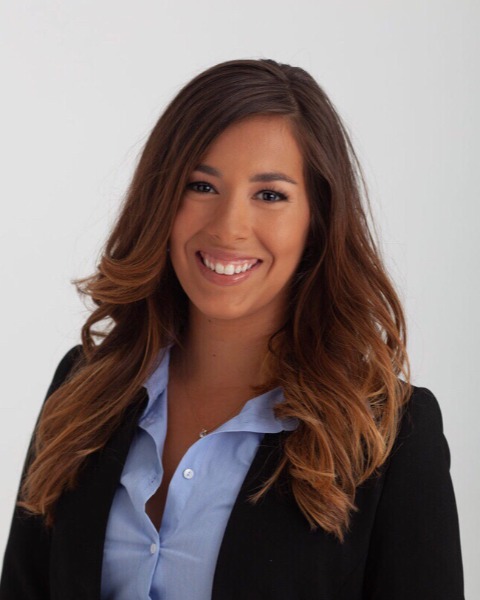Amplification and Assistive Devices (AAD)
PP304 - Optimizing Patient Engagement in a Direct-to-Consumer Model of Hearing Health Care

Katie Keese, AuD (she/her/hers)
Jabra Hearing
Maumelle, ArkansasDisclosure(s): No relevant disclosure to display

Christina Callahan, AuD (she/her/hers)
Head of Clinical Audiology
Jabra EnhanceDisclosure(s): Jabra Hearing: Employment (Ongoing)

Harvey B. Abrams, PhD
Head, Research Audiology
Jabra Hearing
University of South Florida
Lititz, PennsylvaniaFinancial Disclosures: Jabra Hearing: Consultant/Advisory Board (Ongoing), Stockholder/Ownership Interest (excluding diversified mutual funds) (Ongoing)
Non-Financial Disclosures: I do not have any relevant non-financial relationships with anything to disclose.
Presenter(s)
Contributor (Not Presenting)(s)
The purpose of this poster is to describe methods that have been found to be effective in optimizing client engagement in a direct-to-consumer model of hearing healthcare delivery. We will discuss the data associated with that model to include the assessment of otoneurologic risk; the utilization of video consultations; the nature and management of remote requests for hearing aid adjustments; and the design and utilization of an innovative mobile app. We will report clinical outcomes data as measured by the Client Oriented Scale of Improvement (COSI) and consumer satisfaction data as measured by the Net Promoter Score (NPS).
Summary:
Rationale/
Purpose: The purpose of this poster is to describe, through an analysis of multiple metrics, methods that have been found to be effective in optimizing client engagement in a completely digital, direct-to-consumer model of hearing healthcare delivery. Hearing healthcare has experienced significant changes in the last decade characterized by advancements in signal processing technology, sales of hearing aids by large retailers, increase in third-party hearing aid coverage, the availability of direct-to-consumer (DTC) devices to include a new FDA-classification of hearing aids; i.e., over-the-counter (OTC) hearing aids, the increased use of teleaudiology accelerated by the COVID-19 pandemic, consumer-controlled features via mobile devices, and the capability to modify hearing aid parameters remotely. Many of these changes can be viewed as disruptions to the conventional model of hearing healthcare delivery that, historically, has been characterized by multiple face-to-face visits for the purposes of conducting comprehensive audiologic evaluations, selecting and fitting hearing aids, providing routine scheduled follow-ups, and providing unscheduled hearing aid modifications and adjustments. The conventional model of care can result in beneficial long-term client-clinician relationships and the shift to digital platforms of care may be seen as a potential threat to the quality of that relationship (e.g., Singh et al., 2014). However, research that has examined the quality of remote care in general, and the perceived nature of the clinician-client relationship in particular, suggests that clients who receive remote audiology care are generally satisfied with the quality and level of engagement experienced with that care (e.g., Gladden et al., 2015; Timmer & Dyre, 2022).
Methods: We will review the processes associated with a completely digital, direct-to-consumer model of hearing healthcare delivery that is specifically designed to maintain a high level of client-clinician engagement. We will describe the details and data associated with that model to include audiology “touch points” along the client journey; the assessment of otoneurologic risk; the utilization of video consultations; the nature and management of remote requests for hearing aid adjustments; and the design and utilization of an innovative mobile app. We will report clinical outcomes data as measured by the Client Oriented Scale of Improvement (COSI) and consumer satisfaction data as measured by the Net Promoter Score (NPS).
Results &
Conclusions: A completely digital platform of hearing healthcare delivery can incorporate frequent and effective opportunities for client engagement as part of its design. The model and data presented in this poster may help to inform audiologists concerning the opportunities to maintain effective client engagement experiences as we increasingly consider options to the conventional model of hearing healthcare.
References:
Gladden C, Beck L, Chandler D. (2015). Tele-audiology: Expanding access to hearing care and enhancing patient connectivity. J Am Acad Audiol, 26(9):792-9. doi: 10.3766/jaaa.14107. PMID: 26415973.
Singh G, Pichora-Fuller MK, Malkowski M, Boretzki M, Launer S. (2014). A survey of the attitudes of practitioners toward teleaudiology. Int J Audiol, 53(12):850–860. https://doi.org/10.3109/14992027.2014.921736.
Timmer B, Dyre L. (2022). Teleaudiology and hearing aid care: Consumers are satisfied, why aren’t we? Hear Rev, 29(3):20-22.
Learning Objectives:
- Describe those methods and strategies that have been shown to optimize client engagement in a completely digital, direct-to-consumer model of hearing healthcare delivery.
